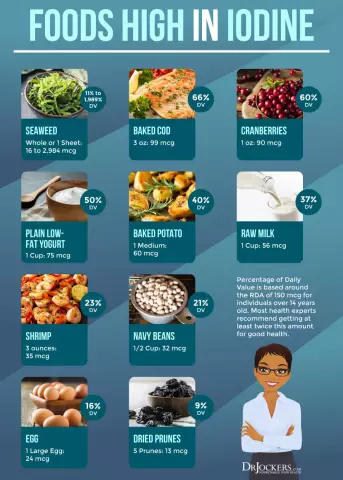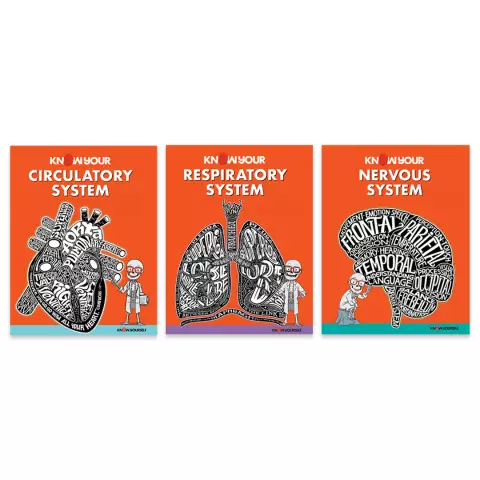- Author Rachel Wainwright [email protected].
- Public 2023-12-15 07:39.
- Last modified 2025-11-02 20:14.
Excess copper

Copper is an element of the eleventh group in the table of chemical elements of DI Mendeleev, whose atomic number is 29. The main biochemical function of copper in the human body is the participation of this element in enzymatic reactions. Copper is part of 11 enzymes. It participates in the processes of hematopoiesis, hemoglobin synthesis, cytochrome enzymes, which play an important role in the exchange of bile acids, steroids, unsaturated fatty acids and contribute to the neutralization of xenobiotics (poisons, drugs, drugs) in the body. Copper is essential for intrauterine growth and development of the baby. Much of the copper in the mother's body is captured by the fetus. Copper helps to normalize the metabolism of vitamins of groups B, A, E, C, P.
It is believed that copper competes with zinc for the absorption of food in the digestive tract. So, an excess of copper can provoke a lack of zinc in the human body. The World Health Organization has formulated a rule regarding the content of copper in the human body: the risk of copper deficiency far outweighs the risk of excess copper in the human body.
An excess of copper provokes the development of several diseases, including diabetes, atherosclerosis, Alzheimer's disease and other neurodegenerative disorders. Copper, which is found in water and vitamin and mineral complexes, is more toxic than copper found in food.
Excess copper: causes
Normally, a healthy adult body contains about 100 mg of copper, and its concentration in organ tissues is different. The highest concentration of copper is observed in the liver (up to 5 mg per 100 g of dry weight), while bone tissues contain up to 0.7 mg of copper. According to the WHO recommendation, the daily rate of copper required for the normal functioning of the body is 1.5 mg. The maximum permissible dose entering the body with food is 5 mg. Only 5-10% of the copper contained in food is absorbed from the food consumed. The human body excretes about 2 mg per day.
The reasons for excess copper in the body are:
- Excessive intake of copper into the body. Excess copper is unlikely if you eat foods rich in this element. It is most likely when inhaled vapors and compounds of copper and copper dust. Excess copper can also be triggered by household use (use of copper dishes, poisoning with copper solutions). The excess copper in the body as a result of the inhalation of vapors is called foundry fever;
- Violation of the metabolism of trace elements in the human body;
- Multiple sessions of hemodialysis.
Symptoms of excess copper
The main symptoms of excess copper obtained from eating foods with an increased concentration of this element are:
- Vomiting, nausea, diarrhea;
- Metallic taste in the mouth;
- Stomach ache;
- Renal failure;
- Neurological disorders (increased salivation, impaired behavior, speech, epileptic seizures);
- Liver failure.
Symptoms of excess copper in case of poisoning of the body with vapors and copper compounds are:
- Headache, general weakness, lethargy, decreased performance;
- Nausea, vomiting;
- Thirst;
- Dry cough, chest pain, chest tightness;
- Chills and a sharp rise in temperature;
- Abdominal pain;
- A number of neurological disorders (dilated pupils, increased reflex activity of the brain).
With an excess of copper, muscle pain, depression, and increased irritability can also occur. Also, with an excess of copper, hemolysis of the blood quickly sets in, which is manifested by jaundice and the appearance of blood in the urine. However, these symptoms develop with excessive copper concentration in the body.
Excess copper in Wilson-Konovalov disease
Wilson-Konovalov's disease is a genetically determined disorder of copper metabolism, as a result of which an excess of copper is formed in the body and severe hereditary diseases of the central nervous system and internal organs develop.

In Wilson-Konovalov's disease, the function of the ATP7B protein, which binds copper in liver cells, is impaired. An excess of non-protein bound copper in the liver leads to liver inflammation and further fibrosis and cirrhosis. Copper from the liver is released into the blood and migrates throughout the body, settling in the eyes, kidneys, and brain. Excess copper in these organs leads to toxic damage.
The main symptoms of the disease are stiffness of movements, which is due to a violation of the motor function of the body when copper settles in the brain, liver failure and cirrhosis, the appearance of a copper-colored rim on the iris of the eyes.
The disease is treatable, the main directions of which are medicines to increase the excretion of copper from the body, a diet to prevent excess copper, vitamins. Patients with this disease require lifelong treatment. It is a mistake to believe that an excessive concentration of copper in the body leads to the development of this disease. However, the symptoms of the disease are caused precisely by a violation of the binding and removal of copper from the body.
Excess copper in the body: treatment
When diagnosing an excess of copper in the body, the patient is prescribed treatment with drugs, the action of which is aimed at binding and removing copper from the body (enterosorbents). In severe forms of intoxication, gastric lavage, infusion therapy, diuretics are prescribed to enhance copper excretion. In some cases, with an excess of copper, symptomatic treatment is used.
With an excess of copper, obtained by production and with vapor poisoning, expectorants, bronchodilators, and an antidote are prescribed.
YouTube video related to the article:
The information is generalized and provided for informational purposes only. At the first sign of illness, see your doctor. Self-medication is hazardous to health!






